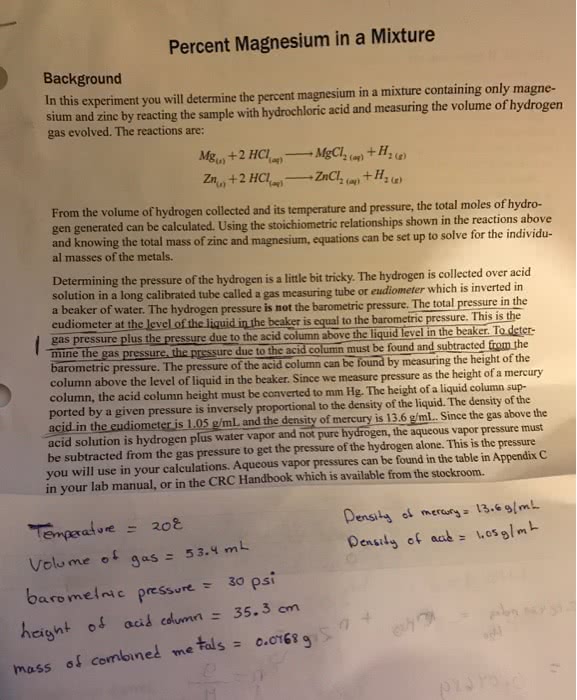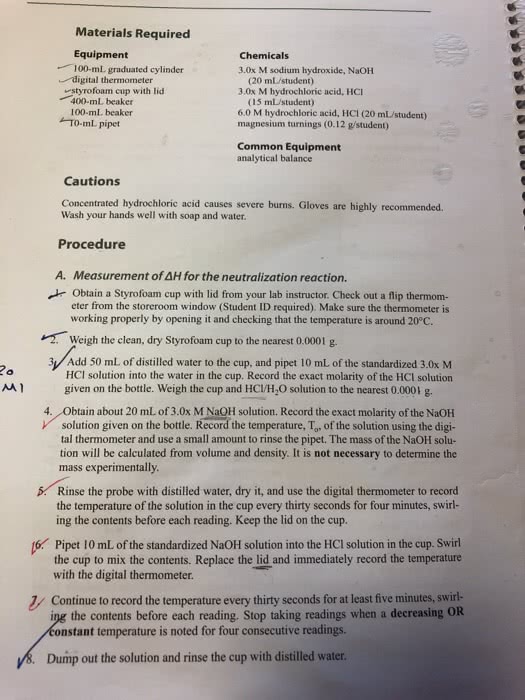(a) After the label fell off a bottle containing a clear liquid believed to be benzene, a chemist measured the density of the liquid to verify its identity. A 25.0-mL portion of the liquid had a mass of 21.95 g. A chemistry handbook lists the density of benzene at 15 °C as 0.8787 g/mL. Is the calculated density in agreement with the tabulated value? (b) An experiment requires 15.0 g of cyclohexane, whose density at 25 °C is 0.7781 g/mL. What volume of cyclohexane should be used? (c) A spherical ball of lead has a diameter of 5.0 cm. What is the mass of the sphere if lead has a density of 11.34 g/cm3? (The volume of a sphere is (4/3) πr3, where r is the radius.)

Calculated density corresponds to the benzene, so an unknown liquid is benzene.
b) Volume necessary for the experiment can be calculated as:

c) First we should calculate the volume of a sphere, knowing that radius equals half of the diameter:

Then we calculate the mass as:

(a) After the label fell off a bottle containing a clear liquid believed to be benzene, a chemist measured the density of the liquid to verify its identity. A 25.0-mL portion of the liquid had a mass of 21.95 g. A chemistry handbook lists the density of benzene at 15 °C as 0.8787 g/mL. Is the calculated density in agreement with the tabulated value? (b) An experiment requires 15.0 g of cyclohexane, whose density at 25 °C is 0.7781 g/mL. What volume of cyclohexane should be used? (c) A spherical ball of lead has a diameter of 5.0 cm. What is the mass of the sphere if lead has a density of 11.34 g/cm3? (The volume of a sphere is (4/3) πr3, where r is the radius.)
Calculated density corresponds to the benzene, so an unknown liquid is benzene.
b) Volume necessary for the experiment can be calculated as:
c) First we should calculate the volume of a sphere, knowing that radius equals half of the diameter:
Then we calculate the mass as:











